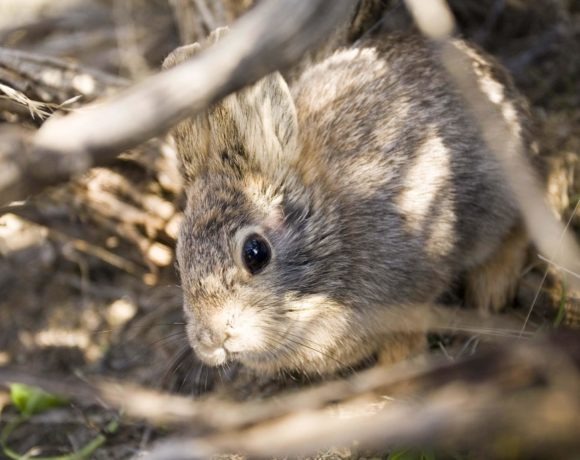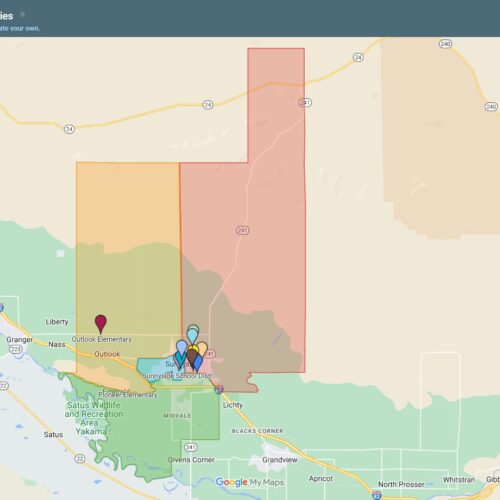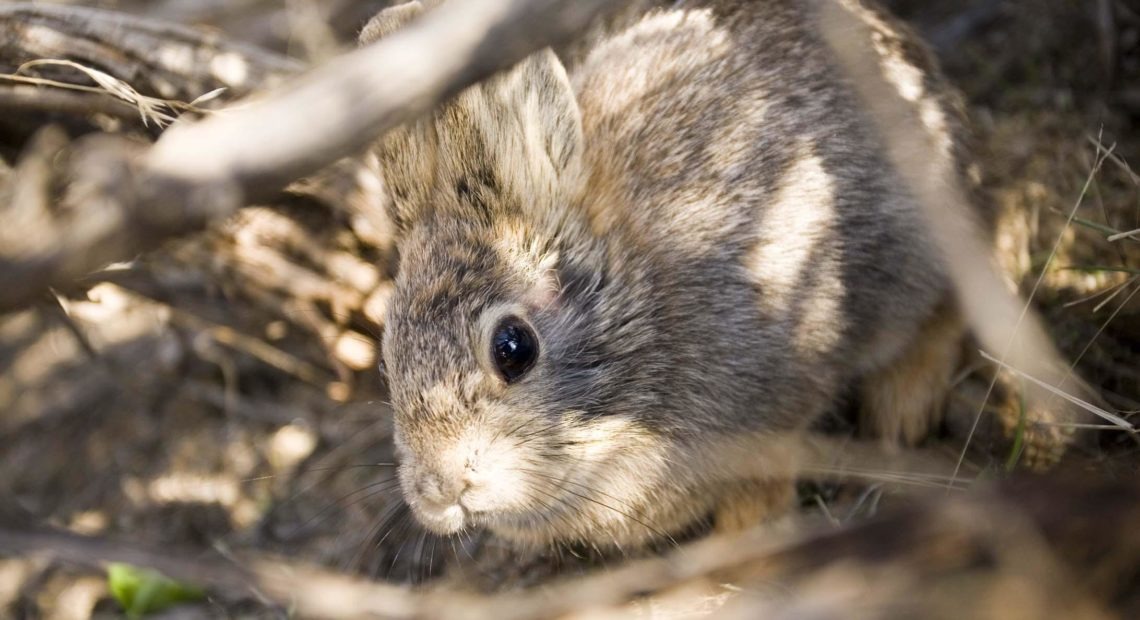
On The Hunt For Pygmy Rabbits
Listen
Rabbits are supposed to breed like, well, you know. But that’s not what’s happening to Washington’s pygmy rabbits. The state’s palm-sized rabbits are endangered. And for more than a decade, the state’s pygmy rabbits have struggled to come back from the brink of extinction. Recently biologists tried to kick-start a second population. But those rabbits are missing.
Pygmy rabbits have a hard time of it in the wild. They’re tiny. And they’re prey for badgers, hawks, coyotes, weasels — just about every hungry animal that calls sagebrush home.
That’s one reason biologists created a “pygmy rabbit hatchery” of sorts outside Ephrata, in Central Washington. There, they breed rabbits and release the young.
About 100 adult pygmy rabbits live outside the breeding grounds at Sagebrush Flats.

Biologists search for pygmy rabbits at Breezley Hills. It’s important that they document a second population in the state.
Photo credit: Courtney Flatt
So far it’s been pretty successful. But today’s story takes place at Breezley Hills, where the outlook isn’t so sunny.
“We released 460 young in these hills last year. And we have yet to find a single one. So where did our 460 young go? That’s our job today,” said John Gallie, a biologist with the Washington Department of Fish and Wildlife.
Biologists searched for days this winter — when it’s easier to spot pygmy rabbit tracks. They flew over the area in a helicopter. Still nothing.
Now, volunteers with The Nature Conservancy are searching for any evidence of pygmy rabbits.
“What we’re aiming for is finding their burrow systems, which are pretty distinct,” Gallie said.
The fist-sized holes are buried underneath mounds of sagebrush. It was a hot summer day hiking up and down hills searching for burrows. Most of the time volunteers found badger holes or very old rabbit burrows from long ago — now homes for black widow spiders.
“I am not seeing anything. The structure is what we’re looking for but I’m not seeing any evidence [of recent rabbits],” Gallie said.
One possible problem for the rabbits: Last year’s drought. Most animals in the area took a hit last year: sage grouse, upland game species, waterfowl, but it’s especially hard on pygmy rabbits because there aren’t many of them to begin with.
Biologists desperately hope to find even one rabbit. They need more than one group of pygmy rabbits in the state.
“One lightning strike and we lose everything we have,” Gallie said.
With lightning could come fire a devastating fire. Disease could also wipe out the rabbits. That makes the search for surviving pygmy rabbits in Breezley Hills pretty important.
“If we find anything we’ll essentially document the second population of this species in existence,” Gallie said.
Finally, at the very end of the first day of searching, on the edge of the search range, biologists found one inactive burrow, probably dug out by last year’s crop.
“We have an intact burrow. Multiple entrances. And right down here is where we have all the piles of scat,” Gallie pointed at one entrance.
And on the second day, they found one active burrow, which was even better than biologists had hoped for: good news for building a pygmy rabbit population in Breezley Hills.
Next, biologists can refine their searches. And maybe one day release more pygmy rabbits here.
Copyright 2016 NWPB
Related Stories:
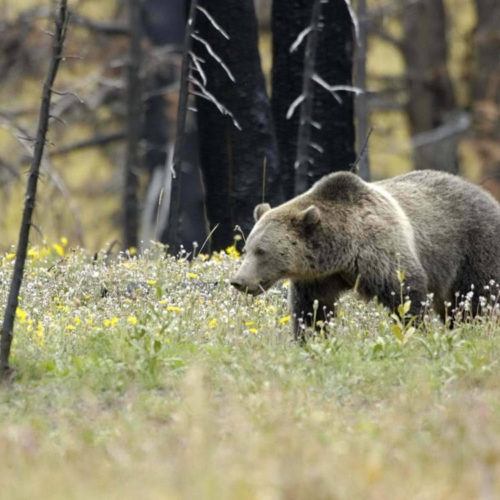
More grizzlies coming to the North Cascades
Grizzly bear in Yellowstone National Park. (Credit: U.S. Fish and Wildlife Service) Listen (Runtime 0:58) Read Grizzly bears will be brought into Washington’s North Cascades. After more than 30 years… Continue Reading More grizzlies coming to the North Cascades
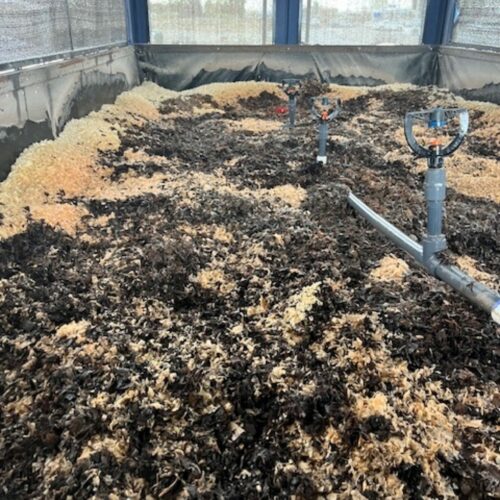
Worms eating airport deicer fluid could be greener approach to airline waste
The Tri-Cities Airport in Pasco is piloting a new program that could lead the country in cleanly disposing of deicing wastewater using worms. (Credit: BioFiltro) Listen (Runtime 0:57) Read To… Continue Reading Worms eating airport deicer fluid could be greener approach to airline waste

Power utilities say Northwest region needs to better prepare for extreme cold
A wind farm. (Credit: Roberta Schonborg / Flikr Creative Commons) Listen (Runtime 1:00) Read Looking back on this past winter, some Northwest utilities have noticed they were really close to… Continue Reading Power utilities say Northwest region needs to better prepare for extreme cold

